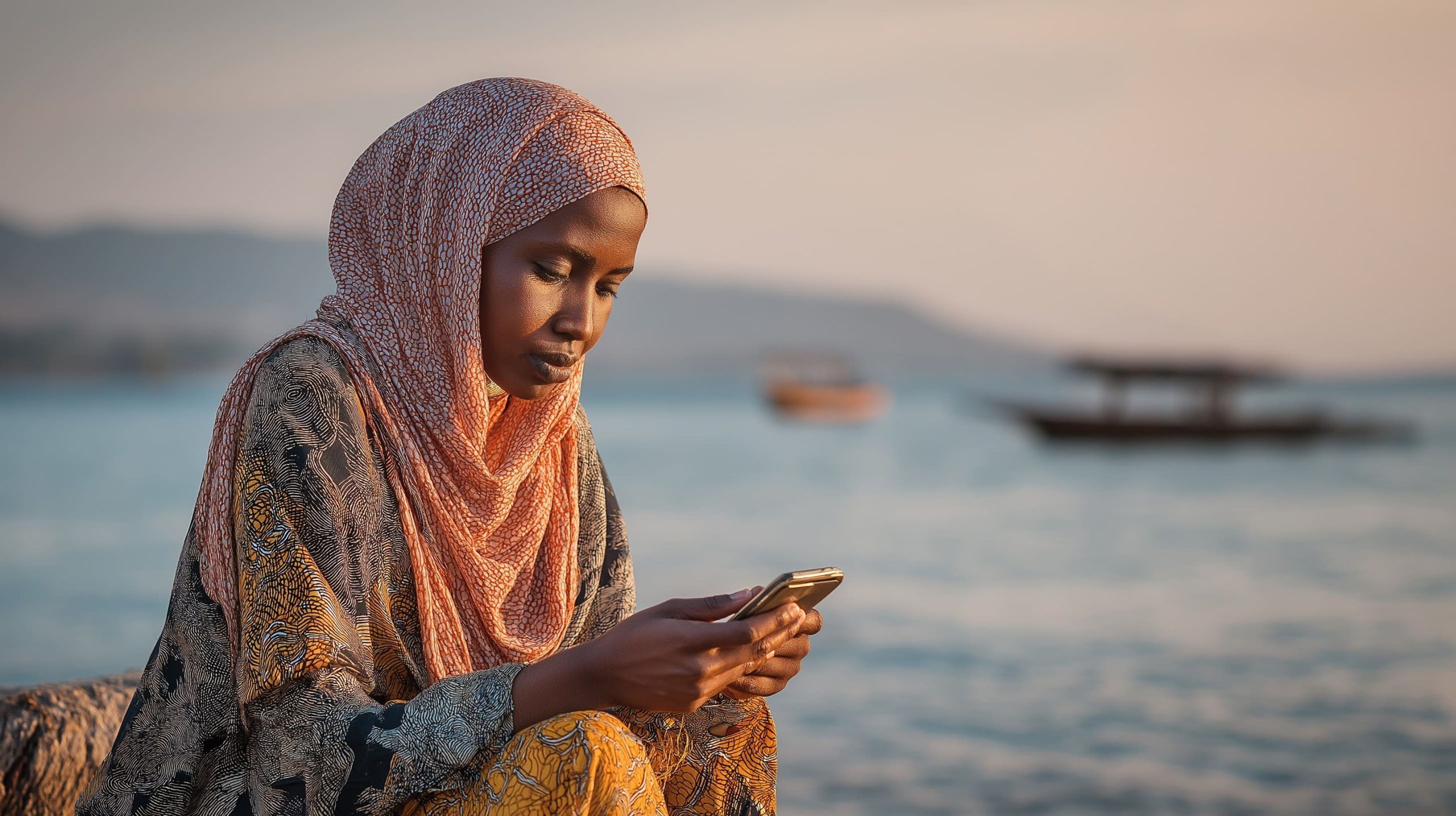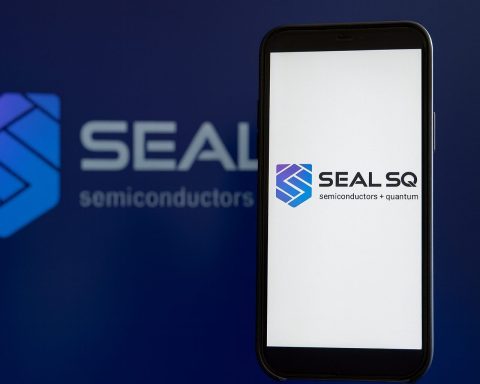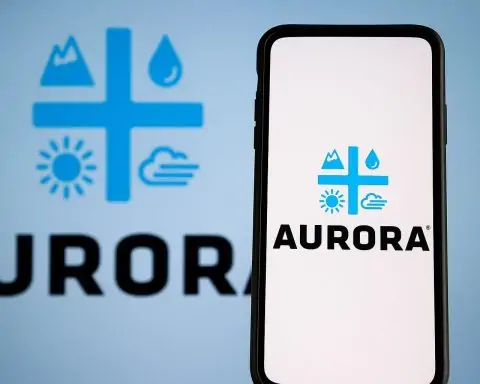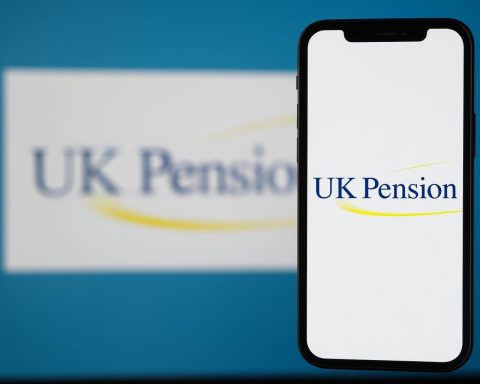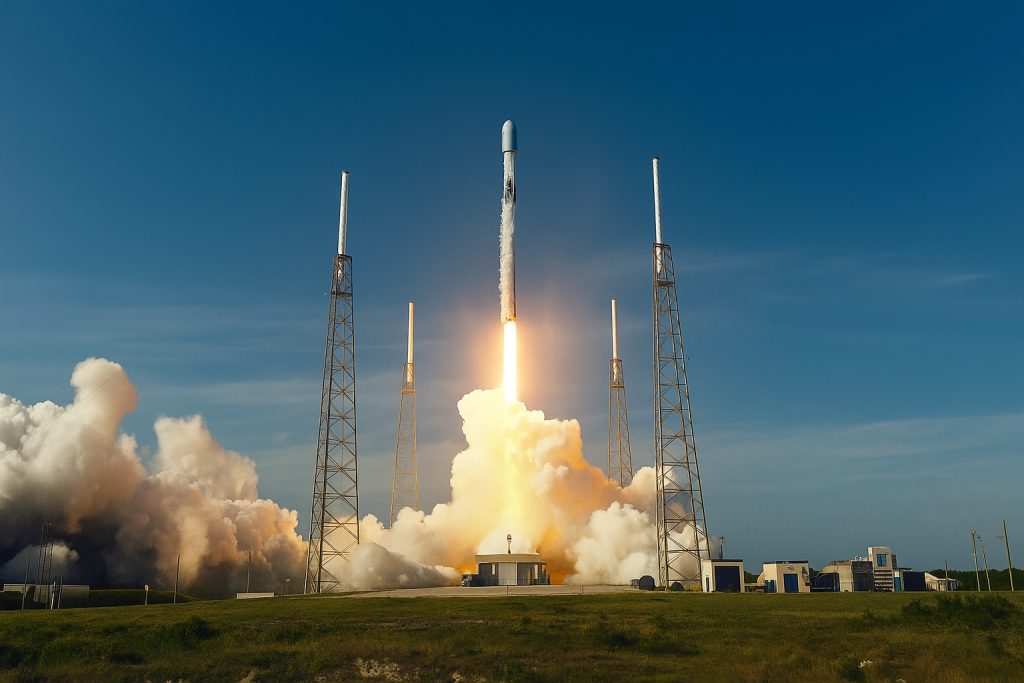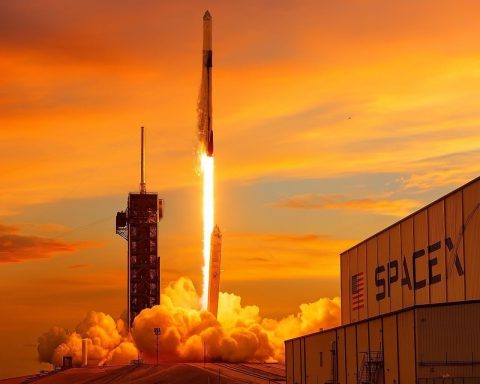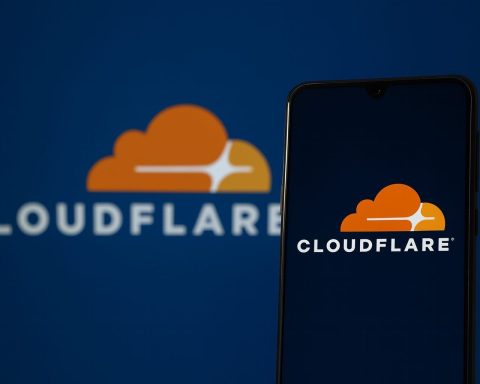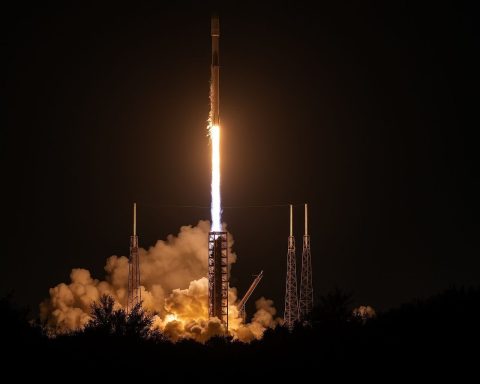- As of January 2024, 21.82 million Tanzanians used the internet, a penetration rate of 31.9% of the population.
- By end-2024, active internet subscriptions reached 48 million, up 16% from the previous quarter, driven by multi-device data use.
- By December 2024, there were 25.6 million mobile broadband subscriptions (3G/4G/5G), while over 22 million users remained on 2G-only services.
- 4G coverage reached 88% of the population by late 2024, 3G coverage about 91%, and 2G signal was nearly universal at around 98%.
- Vodacom Tanzania launched the first 5G network in September 2022 in Dar es Salaam, and by end-2024 5G signals covered about 20% of the population.
- Smartphone penetration stood at 35.9% by December 2024 (about 25.4 million smartphone users), while 64% of users still relied on basic feature phones.
- Rural areas account for about 62% of Tanzania’s population, with urban areas making up roughly 38%, highlighting the rural connectivity challenge.
- The Universal Communications Service Access Fund (UCSAF) subsidized 758 towers from 2023 to mid-2025, about 430 towers were live by March 2025, with 280 more planned and 42 new towers planned for Zanzibar.
- As of Q3 2023, the mobile market was led by Vodacom Tanzania with 20.56 million subscribers (30.6% share), Airtel Tanzania with 18.49 million (27.5%), Tigo/Yas Tanzania with 18.18 million (27.1%), Halotel with 8.27 million (12.3%), and TTCL Mobile with 1.62 million (2.4%).
- In June 2024 Airtel Tanzania activated the 2Africa undersea cable landing in Dar es Salaam, boosting international bandwidth, and Starlink applied for TCRA licensure in November 2024 with approval expected in early 2025.
Internet Penetration and User Statistics
Tanzania is experiencing a rapid digital transformation, with millions of new users coming online. As of January 2024, about 21.82 million Tanzanians were using the internet, representing an internet penetration rate of 31.9% of the population [1]. This marks steady growth (+3% in users from the previous year) but also highlights the remaining gap – roughly 68% of the population (46.6 million people) were still offline at the start of 2024 [2]. In terms of mobile connectivity, Tanzania had 67.72 million active mobile cellular connections, roughly equivalent to 99% of the population [3] (many people own multiple SIM cards). These figures indicate that while connectivity is expanding, a majority of citizens (especially in rural areas) have yet to reap the benefits of the internet.
It’s important to distinguish “internet subscriptions” from unique users. The Tanzania Communications Regulatory Authority (TCRA) tracks subscriptions across all devices and SIM cards: by the end of 2024, active internet subscriptions had surged to 48 million, up from 41.4 million just a quarter earlier [4]. This whopping 16% jump in late 2024 suggests that many Tanzanians are adopting additional data SIMs/devices (for example, a person with a smartphone and a home Wi-Fi device would count twice). Unique user counts are therefore lower – roughly half of the subscription count – due to individuals with multiple connections [5]. The sharp rise coincided with government digitalization efforts and probably an aggressive push by operators to register new data customers.
Demographically, Tanzania’s population skews young (median age ~17) and mostly rural (62% rural vs 38% urban) [6] [7]. This means the next wave of internet growth will likely come from connecting rural communities and youth. Already, there are signs of change: nearly 7 million new internet subscriptions were added in late 2024 alone [8], attributed to digital initiatives and demand for online services. The stage is set for an internet revolution, but it’s one that must bridge urban–rural divides and affordability challenges as detailed below.
Mobile Broadband Dominance (3G, 4G, 5G)
Mobile broadband is by far the primary mode of internet access in Tanzania, accounting for over 99% of all internet connections in the country [9]. Essentially, if a Tanzanian is online, it’s almost always via a mobile network (using smartphones, USB dongles, or wireless routers). As of December 2024, TCRA reported 25.6 million mobile broadband subscriptions (users on 3G/4G/5G networks) [10]. Even so, older mobile technology remains prevalent – over 22 million users were still on 2G-only services (voice/SMS with no or minimal data) by end-2024, mainly in rural areas where basic phones remain common [11]. This underscores a transitional landscape: 4G and now 5G are expanding, but a significant number of people haven’t upgraded to smartphones or higher networks yet.
Coverage has improved dramatically. By late 2024, 4G LTE networks covered 88% of the population (up from 85% just a quarter earlier), and 3G coverage reached about 91% [12]. Virtually the entire country (~98% population) has basic 2G signal [13], meaning voice/SMS services are nearly universal. The rapid 4G rollout is notable – for comparison, in early 2023 only around 40% of Tanzania’s population had 4G coverage [14], so reaching 88% in 2024 reflects heavy investments in tower infrastructure and network upgrades. Urban centers and highways are well-served with 3G/4G, and the gap to rural villages is closing thanks to ongoing tower construction (more on that in a later section).
5G has arrived, but in a limited fashion. Vodacom Tanzania launched the country’s first 5G network in September 2022 (in select parts of Dar es Salaam) [15], and by the end of 2024 5G signals reached around 20% of the population [16]. This initial 5G coverage is mostly concentrated in major cities like Dar es Salaam, Dodoma, Arusha, and Zanzibar’s Stone Town. Airtel Tanzania joined the 5G race in mid-2024, activating 5G at its 2Africa submarine cable landing station event [17]. Tigo (now Yas) and Halotel are also testing or planning 5G deployments. Current 5G offerings are often being used for fixed-wireless access – e.g. Vodacom and Airtel sell 5G routers to deliver home broadband without fiber [18]. While 5G coverage is still modest, the trajectory is to expand it steadily (from 20% pop coverage in 2024) as more spectrum is allocated and more 5G sites come online [19]. For most Tanzanians in the near term, however, 4G LTE will remain the workhorse for internet connectivity, with 5G becoming a factor in urban and enterprise markets.
Mobile data usage is climbing as networks expand. Smartphone penetration stood at 35.9% by Dec 2024 (about 25.4 million smartphone users) [20], up from ~33% in 2023. This means over one-third of Tanzanians now use internet-capable phones, a proportion that is rising alongside cheaper devices and broader coverage. The majority (64%) still rely on basic feature phones [21], but that share is shrinking. To encourage smartphone uptake, the government in 2021 removed VAT on smartphones, tablets, and modems and set a goal to reach 80% internet access by 2025 [22]. While 80% usage by 2025 may be overly ambitious (given we’re around 30% now), such policies illustrate the push toward universal internet access.
In summary, mobile networks (3G/4G now and 5G emerging) are the backbone of Tanzania’s internet. The country has leapfrogged traditional fixed-line development in favor of wireless. With 4G nearly ubiquitous and 5G on the horizon, mobile broadband will continue to drive connectivity, provided that challenges of device affordability and rural network economics are managed.
Fixed Broadband (Fiber and DSL)
Tanzania’s fixed broadband sector – services like fiber-to-the-home (FTTH), DSL, or cable – is small but gradually growing. The vast majority of households do not have wired internet connections, relying instead on mobile networks. By the end of 2024, there were only about 71,661 fiber-to-the-home subscriptions and 11,540 fiber-to-the-office subscriptions in the entire country [23]. These numbers are tiny in comparison to mobile subscriptions, highlighting that fixed broadband reaches well under 1% of the population. Fixed DSL lines (legacy copper telephone lines with internet) are also minimal, as the aging copper infrastructure has not been widely deployed nor modernized outside city centers. Essentially, fixed broadband is confined to urban pockets – serving some businesses, upscale neighborhoods, and institutions that require high-capacity links.
The leading fixed broadband provider is the state-run Tanzania Telecommunications Corporation (TTCL), which has rolled out fiber in Dar es Salaam and other cities, and provides DSL in limited areas. Private ISPs also operate in this space: for example, SimbaNET, CMC/Smile, Raha and others offer fiber or fixed-wireless services targeting corporate clients and expatriates. On Zanzibar, the incumbent Zantel (now under Yas/Axian) has provided some fiber broadband to businesses. However, the total fixed-line subscriber base across all ISPs remains in the tens of thousands, dwarfed by the mobile internet base.
One bright spot is the expansion of fiber infrastructure as backbone/backhaul. The National ICT Broadband Backbone (NICTBB), a government-owned fiber network, spans over 8,300 km across Tanzania and connects to at least six neighboring countries [24] [25]. This backbone allows ISPs and mobile operators to extend connectivity to more towns and to interchange traffic domestically. It also positions Tanzania as a potential regional hub for traffic, especially after recent upgrades (discussed under Future Outlook). For last-mile fixed broadband, TTCL and a few others have begun FTTH deployments in new urban developments and fixed-LTE wireless broadband offerings, but uptake is slow due to cost and right-of-way challenges. A typical home fiber package (e.g. 5–10 Mbps unlimited) can cost on the order of $50–$100 per month – beyond the reach of most households. Moreover, many communities simply don’t have the cables laid to them yet.
Overall, fixed broadband in Tanzania lags far behind mobile broadband. It remains a niche for those who need higher speeds or unlimited data (corporate, tech hubs, etc.). The government’s Digital Economy Framework recognizes this and calls for expanding fiber optic coverage [26], but progress will likely be incremental. In the near future, fixed connectivity may get a boost in dense urban districts and industrial parks, while most homes will stick with mobile network-based internet for convenience and cost reasons.
Satellite Internet Services (the New Frontier)
To reach areas beyond the fiber and cellular grids, satellite internet is emerging as a complementary solution in Tanzania. In fact, one can already get a satellite broadband connection almost anywhere in the country – if one is willing to pay the price. The major player so far is Konnect Tanzania, a service by Eutelsat’s Konnect Africa initiative. Konnect uses High-Throughput Satellites in geostationary orbit to deliver broadband, boasting speeds up to 50 Mbps downlink. The service is marketed as “available right now for everyone in Tanzania” with starter packages from around TZS 70,000 per month (≈ USD $30) [27]. Konnect requires a satellite dish kit and professional installation, but it’s relatively quick to deploy in any rural village or remote site, bypassing the need for terrestrial towers or cables [28]. This makes it attractive for businesses, government offices, or community hubs in poorly connected regions. Konnect’s presence in Tanzania is backed by a €25 million investment plan for 15 years [29], signaling a long-term commitment to satellite as part of the country’s connectivity mix.
The biggest buzz in satellite internet, however, is Starlink – the low-earth-orbit (LEO) constellation by Elon Musk’s SpaceX. Starlink is on the cusp of launching operations in Tanzania. After some delay, Starlink formally applied for licensure with TCRA in November 2024 for both network facilities and services [30]. The regulator opened a public consultation on this application, and as of early 2025 the approval is expected (Starlink had originally aimed to launch by Q1 2023, but regulatory hurdles pushed it back) [31] [32]. Once authorized, Starlink’s LEO satellites could deliver high-speed, low-latency internet to even the most remote corners of Tanzania – for example, rural schools, islands on Lake Victoria, or lodges in the Serengeti. Starlink typically offers 100–150 Mbps speeds per user and has been a game-changer in other African markets for connectivity backbones. The service’s challenge is cost: in Africa, Starlink’s hardware kit runs around $290–$530 (after recent price cuts) and monthly subscriptions range from about $25 (Nigeria) to $50+ in other countries [33] [34]. In Tanzania, where average incomes are low, Starlink will likely target enterprises, NGOs, and collectives (e.g. a village can share a Starlink via Wi-Fi) rather than individual households at first. Still, the Tanzanian government sees Starlink as a welcome entrant – it has emphasized that Starlink must comply with local regulations (spectrum use, data security, etc.) but acknowledges its potential to bridge the digital divide in underserved regions [35] [36].
Aside from Konnect and the impending Starlink, there are other satellite options on a smaller scale. Companies like Viasat, YahClick (Hughes), and Avanti have provided VSAT broadband to businesses and banks in Tanzania for years, though these legacy services tend to be slower (a few Mbps) and costly. Paratus (a pan-African telecom group) is also entering the market, having applied for licenses alongside Starlink in late 2024 [37] – Paratus often acts as a reseller of satellite capacity.
In summary, satellite internet is evolving from a niche backup into a viable connectivity solution for Tanzania’s remote areas. Konnect’s GEO service is already on offer, and Starlink’s LEO constellation is poised to roll out, promising unprecedented speeds. These services, while relatively expensive, can play a crucial role in connecting communities that terrestrial networks still can’t reach (such as isolated rural settlements, national parks, or offshore facilities). As competition heats up, we may even see satellite broadband prices inch downward, making them more accessible. In the long run, satellites will complement Tanzania’s connectivity ecosystem – ensuring no part of the country is truly offline, not even the top of Mount Kilimanjaro (where incidentally, fiber-connected Wi-Fi was installed in 2022).
Major Internet Service Providers (ISPs) and Market Share
Tanzania’s telecom market is competitive, with several operators vying for subscribers. The mobile sector is dominated by four large companies, all foreign-affiliated: Vodacom, Airtel, Tigo (rebranded to “Yas” in late 2024), and Halotel. Additionally, a state-owned operator (TTCL) and a niche 4G network (Smile Communications) have small market presence. The table below shows the mobile subscriber numbers and market shares as of Q3 2023:
Table: Major Mobile Operators in Tanzania (Q3 2023) – Subscriber base and market share [38] [39].
| Mobile Operator | Subscribers (Sept 2023) | Market Share (Sept 2023) |
|---|---|---|
| Vodacom Tanzania | 20.56 million | 30.6% |
| Airtel Tanzania | 18.49 million | 27.5% |
| Tigo (now Yas Tanzania) | 18.18 million | 27.1% |
| Halotel (Viettel) | 8.27 million | 12.3% |
| TTCL Mobile | 1.62 million | 2.4% |
| Smile (4G only) | ~7.8 thousand | ~0.01% |
(Source: TCRA Q3 2023 report)
As shown, no single operator has a dominant monopoly – Vodacom is the largest with ~31% share, but Tigo/Yas and Airtel are close behind, each with 25–30%. Halotel (a newer entrant backed by Vietnam’s Viettel) has captured about 12%. This healthy competition means consumers have choices, and it spurs operators to invest in better coverage and services [40]. Notably, Tigo’s rebranding to “Yas” in November 2024 is part of the Axian Group’s pan-African strategy to unify its telecom brands [41] [42]. Yas (formerly Tigo) together with Zantel (Zanzibar’s operator, also acquired by Axian) serve a combined customer base of ~23.5 million as of 2024 [43]. The rebrand doesn’t change its market position overnight, but it reflects new investment – Axian and partners pledged TZS 1 trillion in 2022 to expand these networks [44] – which could heat up competition further.
In the fixed broadband and ISP segment, the landscape is fragmented but small. TTCL remains a key player, leveraging its fiber backbone and legacy infrastructure to provide fixed internet (fiber, DSL, leased lines) mainly to government and enterprise clients. Zantel historically provided fixed wireless and some fiber in Zanzibar. Private ISPs like SimbaNET, Habari, Raha, and regional operators focus on corporate connectivity, IP transit, and niche broadband (like hospitality Wi-Fi). Because fixed subscriptions are so few (under 100k nationwide), market share here is less meaningful – TTCL likely has the largest share of fixed internet by virtue of being the default provider in many areas (e.g. for FTTH in new housing estates), with others carving out business customer niches. We can say fixed internet services contribute under 1% of overall internet subscriptions [45], so even a “major” fixed ISP is minor compared to any mobile operator.
One area where ISPs (mobile and fixed alike) overlap is enterprise and wholesale services. Operators like Vodacom and Airtel not only sell mobile data to consumers but also provide business solutions – dedicated internet links, IoT connectivity, etc. Meanwhile, companies like SimbaNET provide backhaul and broadband to mobile towers or office parks. The arrival of more international bandwidth (see 2Africa cable in Future Outlook) is prompting even mobile operators to enhance their ISP roles, offering fiber-to-business in competition with traditional ISPs. For example, Vodacom has launched 5G fixed-wireless routers to compete in home broadband [46], and Airtel is now managing a major submarine cable landing which could feed ISP operations [47].
In summary, Vodacom, Yas (Tigo), Airtel, and Halotel are the “big four” driving internet access for the masses, with a roughly even three-way split at the top. Their rivalry has benefited Tanzania in terms of network rollouts and innovative services (like mobile money, which all offer). The market is considered competitive by regulators – indeed, the TCRA notes no operator exceeds the 35% threshold for a dominant position [48]. This competitive dynamic is expected to persist, as each operator races to roll out 5G, extend into rural areas, and capture the growing data market. Smaller players like TTCL and niche ISPs play supporting roles, ensuring that even specialized needs (e.g. a dedicated fiber for a bank, or a 4G home broadband in a suburb) have a provider. With new entrants like Starlink and Paratus soon joining (in satellite broadband) and possible future mergers (there’s speculation if smaller mobile players might consolidate), the ISP landscape will continue to evolve.
Coverage and Urban–Rural Availability
A key aspect of internet access in Tanzania is the divide between urban and rural areas. Urban centers – notably Dar es Salaam (the largest city), Dodoma (capital), Arusha, Mwanza, Tanga, Zanzibar City, and a few others – enjoy far better connectivity infrastructure than rural villages. In cities, residents often have a choice of multiple 4G networks, some fiber-optic broadband options, public Wi-Fi hotspots, and soon even 5G service. Conversely, in many rural communities (where about 62% of Tanzanians live [49] [50]), internet access has until recently been either non-existent or limited to slow 2G/3G signals. This urban–rural gap is closing gradually thanks to deliberate investments by both government and operators.
Mobile network coverage now extends to most populated areas: 2G coverage above 98% means virtually every village has at least basic phone service [51]. However, high-speed data coverage is slightly lower in rural regions – that remaining ~9% of population without 3G and ~12% without 4G are almost entirely in remote rural locales (e.g. deep rural interior, parts of western and southern Tanzania). Those areas might have only a 2G tower nearby or even rely on satellite phones historically. The government, through the Universal Communications Service Access Fund (UCSAF), has been aggressively addressing this gap. In 2023–2024, UCSAF subsidized mobile operators with TZS 126 billion to build 758 new telecom towers in underserved areas [52] [53]. As of March 2025, about 430 of those towers were live, bringing connectivity to hundreds of villages that previously had none or poor signals [54]. The project aims to finish by mid-2025 and is expected to bring network access (voice and data) to 8 million additional rural residents [55]. These towers typically provide at least 3G and often 4G coverage, effectively lighting up vast swathes of the country’s rural landscape with internet for the first time.
To illustrate, an area that might have been a “signal desert” a year or two ago could now suddenly see a 4G signal because a UCSAF-funded tower went up nearby. This is bridging the digital divide in a very direct way. The government isn’t stopping at 758 towers; plans are already in place for another 280+ rural towers to further strengthen coverage [56]. There’s also a parallel effort to improve connectivity in the semi-autonomous islands of Zanzibar: a project to add 42 new towers in Zanzibar (with TZS 6.9 billion funding) is underway [57], which should bolster 4G coverage on Pemba and Unguja islands.
Apart from cellular towers, public Wi-Fi hotspots have been introduced as a means of providing internet in community spaces. In the past four years, UCSAF has installed free Wi-Fi in seven public locations (e.g. plazas, bus stands, or libraries) [58]. While only a handful so far, the plan is to expand these so that people who cannot afford mobile data can still get online at certain hubs (for example, a student in a small town might go to a community center where free Wi-Fi is broadcast). Additionally, initiatives like “digital clubs” in rural areas have been mentioned by TCRA officials [59] – these are programs to engage youth with digital skills and entrepreneurship, often paired with providing internet access points.
Urban areas, on the other hand, are relatively well covered commercially. In Dar es Salaam, for instance, all major providers have 4G coverage, and there are growing pockets of 5G. Fibre broadband is available in some neighborhoods (mostly affluent or business districts). The challenge in cities is often network congestion – as user numbers grow, maintaining quality of service is key – but additional spectrum (like reallocating 2G bands to 4G/5G) and infrastructure (like new fiber backhaul) are being deployed to mitigate this.
One noteworthy point is the role of electricity access in enabling internet expansion. Much of rural Tanzania also lacked electricity until recent years. The government’s rural electrification drive has connected many villages to the grid, which in turn allows mobile operators to power their towers and citizens to charge phones. TCRA’s Director General credited initiatives like connecting electricity to rural areas as a factor that “has boosted demand [for internet]” and allowed providers to extend services there [60] [61]. Essentially, electricity and internet are coming hand-in-hand to the countryside, transforming lives by enabling everything from mobile banking to e-learning where it was previously impossible.
Despite these improvements, challenges remain in truly equalizing urban and rural access. Many rural users can now get a smartphone signal, but affording data packages or smartphones is harder for them (given lower incomes; see next section on pricing). Also, digital literacy is lower in areas with historically little exposure to the internet – thus, initiatives to train and support new users (through schools, community ICT centers, etc.) are crucial. The Digital Economy Strategic Framework 2024–2034 launched by the government explicitly focuses on rural connectivity and inclusion, aiming “to ensure that all Tanzanians, particularly in rural and underserved areas, have reliable internet access” [62] [63]. Achieving that will mean not just dropping a 4G tower in a village, but also making sure people can afford and know how to use the connectivity it provides.
In summary, coverage in Tanzania has vastly improved and is no longer an exclusively urban privilege. Most people live under at least a basic mobile signal footprint now, and the gap in 3G/4G availability is closing thanks to heavy investments in rural towers. Urban areas continue to benefit from better infrastructure and choices (including fiber and 5G), but rural Tanzania is steadily coming online. The focus moving forward will be on deepening usage in those rural regions – turning coverage into actual connectivity by addressing affordability, awareness, and electricity access. With strategic projects and the entry of technologies like satellite (that don’t care about terrain or distance), the urban–rural digital divide in Tanzania could narrow significantly in the next few years.
Pricing and Affordability Trends
While coverage and subscription numbers are up, the cost of internet access in Tanzania remains a significant barrier for many citizens. By global standards, Tanzania’s mobile data prices are low in absolute terms, but when weighed against local incomes, connectivity is relatively expensive. The Alliance for Affordable Internet (A4AI) recommends that 1GB of mobile data cost no more than 2% of average monthly income – a target dubbed “1 for 2”. Tanzania is far from that benchmark. In fact, 5 GB of data cost about TZS 40,960 (USD $17.6) on average in 2022, which amounted to 10% of an average Tanzanian’s monthly income (≈TZS 410k or $176) [64]. This is five times higher than the 2% affordability target, indicating that the typical citizen must spend a substantial share of their earnings to get a modest amount of data. For lower-income groups, the burden is even heavier: for example, people in the agriculture sector (many of whom are rural) would spend around 21% of their income for that 5GB of data [65] – a practically prohibitive cost.
Why is internet relatively pricey for Tanzanians? Part of it is the low income levels – even cheap plans feel expensive when you earn little. Another part is recent industry pricing changes. Although the per-megabyte unit price of data has dropped dramatically over the years (from around TZS 40 per MB in 2019 to TZS 8 by 2022 in pay-as-you-go terms, thanks to competition) [66] [67], the prices of bundled data packages have actually risen in the past couple of years. Almost all users (95%+) rely on bundle packages for better value [68]. In 2021, telecom operators introduced new bundle tariffs that significantly hiked prices – causing public outrage so intense that the regulator TCRA temporarily halted the new bundle prices on April 2, 2021 [69]. Nonetheless, after some adjustments, data bundle prices did increase later in 2021 and again in 2022 [70]. For instance, in 2020 one could buy a 10 GB bundle for TZS 10,000 (~$4.30), but by late 2022, 9.8 GB cost TZS 20,000 (~$8.60) – roughly double the price for slightly less data [71]. Essentially, the cost-per-gigabyte in bundles went up from about TZS 1.6/MB to TZS 1.8/MB over that period [72]. This means consumers are now getting less data for the same money than a couple of years ago, squeezing their internet usage.
The government has taken note of these affordability issues. Notably, it controls and oversees data pricing to some extent – telecom companies cannot raise tariffs without regulatory approval [73]. The Minister of ICT, Nape Nnauye, confirmed in late 2022 that any bundle price changes need the government’s green light [74]. This policy came after the public outcry in 2021, essentially to prevent sudden, steep price hikes. In one instance, the government did step in: responding to complaints on social media, authorities pressured operators to lower data costs in February 2021 [75]. So while prices did increase subsequently, there’s now greater scrutiny on keeping tariffs within reason.
To enhance affordability, authorities have also implemented supply-side measures. In the 2021/22 budget, the government exempted VAT on smartphones, tablets, modems, and other ICT devices [76]. This was meant to reduce device costs (a decent smartphone can still be 1–2 months’ salary for many). They also set, as mentioned, a goal of reaching 80% internet access by 2025 [77], which implicitly requires affordable pricing. Market reality suggests that without further price reductions, achieving that usage level is unlikely. On the industry side, having more international bandwidth (from new undersea cables) could reduce wholesale internet costs, potentially translating into cheaper retail data in the long run (if competition forces operators to pass savings on).
It’s informative to compare regionally: Government sources have claimed Tanzania has the lowest mobile data prices in East Africa, citing an average of $0.75 per 1GB in Tanzania vs $1.56 in Uganda and $2.25 in Kenya [78] [79]. However, those figures can be misleading because Tanzanians also earn far less on average than Kenyans or Ugandans. When you factor in income, Tanzanians actually spend a greater share of their earnings on internet than some neighbors. For example, $0.75 is 0.43% of a Tanzanian’s monthly income ( $174), whereas $2.25 is only 0.30% of a Kenyan’s monthly income ($738) – so data is relatively more affordable in Kenya despite the higher absolute price. The headline: Internet is still not “affordable” by global standards for the majority of Tanzanians, especially for higher usage bundles.
The high cost has tangible impacts: many people limit their internet use to what is absolutely necessary – e.g. messaging on WhatsApp or checking Facebook on a daily or weekly bundle, rather than streaming video or taking online courses which consume more data. There’s also a rural vs urban disparity; urban users with higher incomes can buy bigger data packages (which often have better value per GB) while rural poor might only afford small daily packs that are expensive per MB.
Going forward, improving affordability is critical for digital inclusion. Some potential positive trends: the entry of new players like Starlink could introduce alternative internet options (though initially costly, competition may spur local ISPs to adjust pricing). Also, as 4G and 5G networks scale up, the cost per bit delivered should decrease for operators, theoretically allowing cheaper data (provided tax/regulatory fees don’t counteract that). The government might also explore targeted subsidies or “free basics” programs for education and health content to mitigate the cost barrier.
In conclusion, pricing remains a major challenge – the average Tanzanian has to think twice about spending on data. Efforts like tax exemptions on devices, regulatory checks on bundles, and advocacy by groups like A4AI are ongoing to make internet access more affordable and accessible to all. Until prices drop closer to the global affordability benchmark, cost will continue to limit how many people come online and how fully they can utilize the internet’s benefits.
Internet Speed and Quality
Tanzania’s internet speeds have been improving year by year, thanks to upgraded mobile networks and new fiber capacity. At the start of 2024, users could expect median download speeds of around 22.6 Mbps on mobile connections, and about 18.0 Mbps on fixed broadband [80]. These figures, from Ookla’s Speedtest data, represent the middle of the market (half the users get faster, half slower). For mobile, 22.6 Mbps is a decent leap – the median mobile speed jumped by 56% (+8.13 Mbps) during 2023 [81]. Fixed broadband speeds (which include fiber, DSL, etc.) also rose about 38% (+4.99 Mbps) in that period [82]. The improvement in mobile speeds can be attributed to operators expanding 4G LTE (which offers higher throughput than 3G) and increasing the capacity of their networks (adding more spectrum and sites). The rise in fixed speeds likely reflects more fiber subscribers coming online (as opposed to older ADSL users) and possibly the influence of new backhaul like the 2Africa submarine cable.
However, Tanzania’s speeds still lag behind global averages – worldwide median mobile download is ~42 Mbps and fixed ~85 Mbps as of 2023 (for context). Within Africa, Tanzania sits around the middle tier of countries for mobile internet speed. The fastest African countries (like South Africa) see over 60 Mbps mobile medians, whereas others in East Africa, e.g. Kenya, are in the 20–30 Mbps range. So Tanzania at ~22.6 Mbps mobile is comparable to neighbors and is expected to climb further as 4G coverage densifies and 5G gradually contributes. It’s also notable that the median mobile speed (22.6) exceeds fixed (18.0) in Tanzania [83] – this is somewhat unusual (in many countries fixed broadband is faster). It suggests that a lot of “fixed” tests are on slower ADSL lines or basic fiber plans, whereas mobile can sometimes leverage strong 4G in good conditions. It might also reflect that only relatively few fixed subscriptions exist and those might be on entry-level packages.
For the typical user in an urban area with 4G, speeds of 5–20 Mbps are common, which is sufficient for HD video streaming, video calls, and general browsing. In rural areas, those at least with 3G can get a couple of Mbps (enough for basic internet), but many on 2G or weak signals experience sub-1 Mbps or dial-up-like speeds, essentially unsuitable for modern internet use beyond text messaging. Latency is another aspect of quality: 4G networks have latencies ~30-50 ms, 3G around 60-80 ms, while 2G is very high (200+ ms, noticeable sluggishness). Satellite internet via geostationary (Konnect) has high latency (~600-800 ms), which is fine for browsing but not for real-time apps; Starlink LEO would bring that down to ~50 ms, akin to 4G. So depending on the technology in use, the user experience can vary widely.
One major improvement on the horizon for quality is the new 2Africa submarine cable. In June 2024, Airtel Tanzania activated the 2Africa undersea cable landing in Dar es Salaam, which brings a massive increase in international bandwidth capacity (the cable’s design capacity is on the order of hundreds of terabits, a “10-fold increase” for Tanzania’s international capacity according to officials) [84] [85]. More capacity and modern routing mean that internet traffic from Tanzania can reach global content faster and with less congestion. The 2Africa cable is expected to significantly reduce latency to content and reduce outages caused by single cable cuts (since it adds diversity). In recent years, East African countries suffered slowdowns when older cables like SEACOM or EASSy were cut; the new cable aims to make such “internet downtimes due to cable cuts a thing of the past” [86] [87]. Moreover, with local data centers being encouraged, content delivery networks (CDNs) are caching more content inside Tanzania. The President noted that 2Africa will enable more local hosting and content transfer, improving speeds for end-users on 4G/5G because data doesn’t have to travel as far [88]. In short, the quality (speed & reliability) of internet is poised to get better as the infrastructure backbone gets beefed up.
Already, by early 2025, average mobile broadband speed was around 12.5 Mbps according to TCRA’s Q1 2025 report [89] (that might be an average including rural users, whereas the earlier 22.6 Mbps was a median in best-case scenarios). As 4G reaches remaining rural areas, we can expect the minimum speeds to improve – someone on 3G can get maybe 2-5 Mbps instead of sub-1Mbps on 2G. And in urban areas, 5G users can get extremely fast connections (in tests, Vodacom demoed up to 800 Mbps on 5G) [90], though real-world 5G for consumers might be capped around 100–300 Mbps plans initially.
Network quality also involves consistency and uptime. Tanzania’s operators have to contend with challenges like power outages (backup generators and batteries are used at towers), fiber cuts (from road works or vandalism), and even climate issues (floods sometimes wash out remote sites). The government, in partnership with operators, has been working to improve redundancy – e.g. microwave links to backup fiber routes, and now multiple undersea cables to avoid single points of failure. The goal is to make internet connectivity not only fast, but reliable and always-on. This reliability is crucial as more critical services (banking, e-government, telemedicine) depend on stable connections.
In summary, internet speeds in Tanzania are rising and network quality is improving, but there’s room for growth. The typical user experience has evolved from barely loading a webpage a decade ago to now being able to stream video on mobile. With new infrastructure like 2Africa and 5G, speeds will edge upward and latency downward. The focus will likely shift from just “more Mbps” to ensuring consistency and coverage – i.e. making sure even the rural 3G user has a decent, uninterrupted experience, and that urban networks don’t bog down at peak times. The signs are positive: investment in quality is evident and the data shows year-on-year improvement [91] [92]. Tanzanians can look forward to faster and more reliable internet as the country’s digital ecosystem matures.
Government Policies, Regulation, and Digital Inclusion Initiatives
The Tanzanian government plays an active role in the ICT sector, with a mix of policies aimed at expanding access, ensuring competition, and addressing the digital divide. Key strategies and regulatory frameworks include the National ICT Policy 2016, the newer Digital Economy Strategic Framework 2024–2034, and the oversight by TCRA under laws like the Communications Act.
Digital inclusion is a top priority in national plans. The Digital Economy Framework (launched July 2024) explicitly focuses on leveraging technology for economic growth and inclusion over the next decade [93]. It emphasizes building digital infrastructure, improving connectivity, and investing in technological skills so that all segments of the population can participate. One objective under this framework is to expand broadband access to all Tanzanians, especially in rural and underserved areas, with reliable service [94]. The results of these policy directions are evident in initiatives like the UCSAF rural towers project (funded by the government as noted earlier) which directly extends networks to marginalized communities.
Another inclusion effort is in education: Over the last four years, the government equipped 469 schools with ICT kits (computers, projectors, etc.) at a cost of TZS 2.5 billion [95] [96]. This is to familiarize students with digital literacy and even facilitate e-learning (e.g. using projectors for exams) at an early age. The intention is to ensure youth across the country gain computer skills and can join the digital economy workforce in the future [97]. The mention of “digital clubs” in rural areas [98] also ties into this – these clubs encourage innovation and digital awareness among young people outside the cities.
On the regulatory environment side, Tanzania has a somewhat mixed approach: pro-investment and pro-consumer in many ways, but also known for some restrictive measures around content and privacy. On the positive side, TCRA’s regulatory actions have helped maintain competition in the telecom market. The fact that no operator exceeds 35% share [99] is partly due to policies preventing monopolies and encouraging new entrants. The licensing of Halotel in 2015 and the openness to newcomers like Starlink in 2023-24 show a willingness to broaden the market. TCRA also implemented number portability and sets quality of service standards that operators must meet (e.g. call drop rates, minimum broadband speeds, etc., though enforcement details are not widely publicized).
The government has shown it will intervene on pricing and consumer protection – as noted, it halted data bundle price hikes that were deemed excessive [100], and continually pressures telcos to keep prices “the lowest in the region” [101]. There’s also a Universal Service Fund (UCSAF) financed partly by a levy on telecom revenues, which is plowed back into rural coverage projects. Tax-wise, telecom services have been a target for revenue (there are various fees and an excise tax on airtime/data), but the government has to balance that with affordability. The VAT removal on devices was one such balancing move to ease consumer costs [102].
In terms of internet governance, Tanzania has enacted laws that affect the online environment, such as the Cybercrimes Act 2015 and Online Content Regulations 2018. These have introduced licensing requirements for online content producers (like bloggers) and social media monitoring [103] [104]. While not directly about access, such regulations can influence how people use the internet (for instance, the need for bloggers to register and pay fees may stifle local content creation). There’s an ongoing debate about digital freedoms: a 2024 report warned of risks to digital rights ahead of the 2025 elections [105]. The government, being a major stakeholder (it owns TTCL and partly Airtel via shares, and is the largest advertiser for media), has a lot of influence over the digital domain. President Samia’s administration, compared to the prior one, has been relatively more open – for example, unblocking certain banned media websites and encouraging social media feedback to governance. However, the fundamental regulatory stance is to ensure internet is used “responsibly”: the state keeps a watchful eye on hate speech, misinformation, etc., which sometimes leads to content takedowns or arrests under the Cybercrimes Act.
Notable government-led programs and policies for digital inclusion and access:
- Universal Communications Service Access Fund (UCSAF): funding rural tower construction (758 towers project [106]), setting up community internet centers and hotspots, subsidizing connectivity for schools/health centers, and testing new tech for rural connectivity [107].
- Device and Service Tax Policies: Removal of VAT on devices (2021/22) [108]; previously reduced excise duty on telecom services (though some fees like a controversial SIM card levy were introduced in 2021, sparking debate). There’s constant calibration of taxes to make ICT more accessible.
- National ICT Broadband Backbone (NICTBB): a policy-driven infrastructure project that built a countrywide fiber network, with the government leasing capacity to operators at regulated prices to drive down their costs and extend connectivity inland.
- Digital Literacy and Capacity Building: Provision of ICT equipment to schools [109]; integration of ICT in curricula; partnerships with organizations to train youth and entrepreneurs in digital skills.
- E-Government and Public Services Online: The government’s push to put services online (e.g. business registration, tax filings, national IDs, etc.) indirectly drives internet uptake. The President launching an initiative for a unified citizen ID and digital government services shows high-level commitment [110] [111]. If farmers, for example, can get market info or government payments via the internet, that’s an incentive to go online.
- Data Protection and Cybersecurity: A new Data Protection Act was passed in 2022, and compliance is expected of all service providers (Starlink’s application had to consider alignment with these local data laws [112] [113]). Building trust in online services is part of inclusion – if people feel secure using mobile money or e-commerce, they will use it more.
In summary, Tanzania’s policy environment actively promotes the expansion of internet access, with substantial public investments in infrastructure and an emphasis on affordability and inclusion. Regulatory interventions aim to keep the market competitive and prices in check, although the state also imposes certain controls on content and charges significant taxes on telecom usage (a double-edged sword for affordability). The direction for the next decade is clearly set in the Digital Economy Framework: use digital tech to catalyze economic growth and social development. This means continued focus on connecting the unconnected (rural networks, satellites, etc.), upskilling the population for digital participation, and ensuring that connectivity translates into real opportunities (jobs, education, healthcare improvements). Government and regulatory action will remain a key determinant of how quickly and broadly Tanzania can achieve universal, meaningful connectivity.
Future Outlook: Investments, Projects, and Challenges
Tanzania’s internet landscape is poised for significant evolution in the coming years. Both the public and private sectors are investing heavily to improve connectivity. Here’s a look at what to expect moving forward, and the challenges that lie ahead:
Major Upcoming Investments & Projects:
- 5G Expansion: We will see a broader rollout of 5G networks beyond the current city centers. Airtel’s launch in mid-2024 and Vodacom’s early start indicate a competitive race. By 2025–2026, 5G coverage could extend to all major cities and industrial zones, potentially covering half the population or more (up from 20% in 2024) [114]. This will enable new services like IoT networks, high-speed home broadband (via fixed-wireless 5G), and advanced applications (smart city sensors, etc.). The challenge will be making 5G devices and plans affordable enough so that it’s not just a luxury for a few. Early indications (like Yas claiming to offer the “fastest 5G network” with Axian’s support [115]) show operators are keen to market 5G aggressively.
- New Submarine Cables & International Links: The 2Africa cable going live in 2024–2025 is a game-changer [116]. Tanzania is now connected to one of the world’s largest undersea cable systems, greatly boosting international bandwidth. Additionally, another new cable called Africa-1 is expected; Dar es Salaam is listed as a landing for the upcoming “Africa-1” subsea cable system [117] [118], which will further enhance redundancy and capacity. These, combined with existing cables (EASSy, SEACOM, etc.), will turn Tanzania into a regional connectivity hub. We can anticipate lower wholesale internet costs and the establishment of local data centers (as hinted by talk of “high-capacity data centres” accompanying 2Africa [119]). Companies like Google and Facebook have also been deploying edge caches in Africa, so Tanzanians should get faster access to content (and perhaps companies like Google’s Equiano cable might extend to East Africa in the future). The government hopes these cables will position Tanzania as East Africa’s preferred digital gateway [120], serving landlocked neighbors with internet transit and attracting tech investments.
- Rural Connectivity and Tower Build-out: The UCSAF 758-tower project is scheduled to complete by mid-2025 [121], and an additional ~280 towers are planned thereafter [122]. By 2025/26, virtually all villages of substantial size should have at least a basic mobile broadband signal. The target is to reach the remaining uncovered communities (perhaps those remote 2-5% population) and upgrade existing 2G-only areas to 3G/4G. This will be bolstered by the ongoing electrification programs – more villages on the grid means more potential sites for towers. We may also see alternative solutions for the hardest-to-reach spots: community networks (small local ISPs), solar-powered micro BTS, or increased satellite deployments (a single Starlink or Konnect hotspot could be placed in a village as a public access point where a terrestrial tower isn’t feasible).
- Satellite Internet Proliferation: By late 2025, expect Starlink to be operational in Tanzania and likely gaining users, especially among businesses, NGOs, and tech-savvy individuals in remote areas. If Starlink replicates what it did in other African countries, we might see special programs like connecting rural schools (as they did in Rwanda with 500 schools pilot) [123]. Also, Konnect will continue its push – its local presence (including shops, partnerships [124]) suggests they’re trying to capture rural household and SME markets. Increased competition between Starlink (LEO) and Konnect (GEO) could result in better packages or lower equipment costs. In the longer term, other satellite constellations (OneWeb, Project Kuiper) might also extend service to Tanzania, further driving competition.
- Local Manufacturing and Innovation: A future trend could be assembly or manufacturing of smartphones or ICT equipment locally, given the demand. While no major announcements yet, neighboring Rwanda started assembly plants for phones; Tanzania might consider incentives for local manufacturing to drive device costs down and create jobs.
- Digital Services Growth: As more people come online, there will be growth in digital services – e-commerce, fintech, e-health, online education, and so on. The government’s embrace of e-government will also push citizens to use the internet for accessing services like IDs, licenses, and public information. This creates a virtuous cycle: the more useful the internet is for daily tasks, the more people will invest in getting connected. By 2025, mobile money and banking (already huge in Tanzania) will likely be joined by new digital financial services, perhaps leveraging the improved networks (e.g. smartphone-based loans, insurance, etc.).
- Innovation Hubs and Tech Investment: Better connectivity is attracting tech initiatives – for example, AI and robotics labs were mentioned by officials during the 2Africa launch [125]. We might see international tech companies paying more attention to Tanzania as a growth market. Already, Tanzania has local startups in fintech and agritech that could scale with more internet penetration. The digital economy’s contribution to GDP is expected to rise; projections cited by the government claim tens of billions of dollars in economic benefits from increased broadband in coming years [126].
Challenges on the Horizon:
- Affordability & Inclusivity: The foremost challenge is ensuring the remaining offline population (mostly low-income and rural) can afford and use the internet. Even with coverage nearly universal, if data prices stay high relative to incomes, or if people lack devices, they won’t come online. Efforts like lowering costs, introducing ultra-low-cost bundles for basic needs, or free community Wi-Fi, will be critical. Without such measures, there’s a risk of a usage gap where networks exist but people don’t utilize them fully. Women and rural folks currently lag in internet access – targeted inclusion programs (like digital literacy for women, or subsidized data for farmers) might be needed to close these gaps.
- Quality of Service in a High-Usage Era: As millions more Tanzanians start consuming video content, doing remote work, or using cloud services, network congestion could become an issue. Operators will need to continuously invest in capacity – more spectrum (perhaps migrating more 2G bands to 4G/5G), more base stations in urban areas to handle dense traffic, and robust backhaul. The 2Africa cable adds international capacity, but domestic backhaul and metro fiber also need expansion to avoid bottlenecks between cities and within cities. Ensuring that internet speeds and reliability continue to improve (not plateau or degrade under load) is an ongoing challenge.
- Regulatory Balance: The government must balance encouraging innovation with oversight. For instance, how Starlink is regulated will set a precedent for other non-traditional providers. Ensuring a level playing field (so that, say, local ISPs aren’t disadvantaged against a global player) while still welcoming new technology is tricky. Additionally, content regulation could become a flashpoint – with elections in 2025, internet shutdowns or social media throttling has happened in some countries; Tanzania will need to manage political content without undermining the confidence in its digital economy. A heavy-handed approach could scare away investors or clamp down on internet use.
- Cybersecurity and Privacy: With more people online and more critical systems digitized, cyber threats increase. From mobile money fraud to hacking of government databases, Tanzania will need to strengthen its cybersecurity measures and user awareness. The Data Protection Act will need effective enforcement to protect user data, otherwise mistrust could slow adoption of online services. Building a secure digital ecosystem is a challenge that comes with greater connectivity.
- Maintenance and Sustainability: The new infrastructure (towers, fiber cables, etc.) will require maintenance. Rural towers need power (sometimes solar + battery) and security (to prevent vandalism). Fiber cables can be cut accidentally. Allocating funds and systems to maintain what’s built is as important as building new. UCSAF and operators will have to ensure the rural sites remain operational years down the line. There’s also the question of upgrading: e.g., in a few years 2G networks might be phased out to repurpose spectrum – making sure that doesn’t leave any device users stranded (or providing them alternatives) will be something to handle carefully.
- Economic Factors: The broader economic context – inflation, currency exchange rates, etc. – can affect internet access. For example, if the Tanzanian shilling weakens significantly, imported telecom equipment and bandwidth costs (often in USD) go up, potentially driving consumer prices higher. Similarly, if people’s incomes don’t rise along with the digital economy growth, affordability remains an issue. The government and private sector banking on the digital economy must also invest in training and job creation to ensure the benefits of connectivity translate to tangible improvements in livelihoods.
Outlook: Despite challenges, the trajectory for Tanzania’s internet access is overwhelmingly positive. The phrase “digital revolution” genuinely applies – from only 5% internet penetration in the early 2010s to potentially over 50% in a few more years if trends continue. Tanzania’s youthful population could be a boon: a generation that grows up digital-savvy can drive innovation and demand. The government’s recognition that “Internet is an essential tool for development… it needs to be accessible, affordable, and of good quality” [127] is encouraging, as it aligns policy with what advocates have long said. If Tanzania can keep up the momentum of infrastructure expansion, continue pro-competitive and pro-consumer regulation, and address the affordability hurdle, it stands to be one of Africa’s digital success stories.
In the near future, we might witness stories of farmers using smartphone apps to sell crops, remote clinics consulting specialists via telemedicine, students in a village streaming educational videos, and startups in Dar es Salaam reaching global markets – all enabled by the ubiquitous internet connectivity that is now being built. Tanzania’s internet revolution is well underway, turning what was once a luxury into a daily necessity, and ensuring that even those in the once-isolated corners of the country can look up and say “Hamna shida, tumeunganishwa” – “No problem, we are connected.”
Sources: [128] [129] [130] [131] [132] [133] [134] (and others as cited in text above).
References
1. datareportal.com, 2. datareportal.com, 3. datareportal.com, 4. www.thecitizen.co.tz, 5. datareportal.com, 6. datareportal.com, 7. datareportal.com, 8. www.thecitizen.co.tz, 9. trendsnafrica.com, 10. www.thecitizen.co.tz, 11. www.thecitizen.co.tz, 12. www.thecitizen.co.tz, 13. www.thecitizen.co.tz, 14. fesmedia-africa.fes.de, 15. portal.powertec.com.au, 16. www.thecitizen.co.tz, 17. www.thecitizen.co.tz, 18. portal.powertec.com.au, 19. www.thecitizen.co.tz, 20. www.thecitizen.co.tz, 21. www.thecitizen.co.tz, 22. fesmedia-africa.fes.de, 23. www.thecitizen.co.tz, 24. www.thecitizen.co.tz, 25. www.thecitizen.co.tz, 26. www.thecitizen.co.tz, 27. africa.konnect.com, 28. africa.konnect.com, 29. extensia.tech, 30. www.thecitizen.co.tz, 31. www.thecitizen.co.tz, 32. blog.telegeography.com, 33. blog.telegeography.com, 34. blog.telegeography.com, 35. www.thecitizen.co.tz, 36. www.thecitizen.co.tz, 37. www.thecitizen.co.tz, 38. trendsnafrica.com, 39. trendsnafrica.com, 40. trendsnafrica.com, 41. www.thecitizen.co.tz, 42. www.thecitizen.co.tz, 43. www.thecitizen.co.tz, 44. www.thecitizen.co.tz, 45. trendsnafrica.com, 46. portal.powertec.com.au, 47. www.thecitizen.co.tz, 48. trendsnafrica.com, 49. datareportal.com, 50. datareportal.com, 51. www.thecitizen.co.tz, 52. www.thecitizen.co.tz, 53. www.thecitizen.co.tz, 54. www.thecitizen.co.tz, 55. www.thecitizen.co.tz, 56. www.thecitizen.co.tz, 57. www.thecitizen.co.tz, 58. www.thecitizen.co.tz, 59. www.thecitizen.co.tz, 60. www.thecitizen.co.tz, 61. www.thecitizen.co.tz, 62. www.thecitizen.co.tz, 63. www.thecitizen.co.tz, 64. fesmedia-africa.fes.de, 65. fesmedia-africa.fes.de, 66. thechanzo.com, 67. thechanzo.com, 68. thechanzo.com, 69. thechanzo.com, 70. thechanzo.com, 71. fesmedia-africa.fes.de, 72. thechanzo.com, 73. fesmedia-africa.fes.de, 74. fesmedia-africa.fes.de, 75. fesmedia-africa.fes.de, 76. fesmedia-africa.fes.de, 77. fesmedia-africa.fes.de, 78. fesmedia-africa.fes.de, 79. fesmedia-africa.fes.de, 80. datareportal.com, 81. datareportal.com, 82. datareportal.com, 83. datareportal.com, 84. www.thecitizen.co.tz, 85. www.thecitizen.co.tz, 86. www.thecitizen.co.tz, 87. www.thecitizen.co.tz, 88. www.thecitizen.co.tz, 89. www.tanzaniainvest.com, 90. developingtelecoms.com, 91. datareportal.com, 92. datareportal.com, 93. www.thecitizen.co.tz, 94. www.thecitizen.co.tz, 95. www.thecitizen.co.tz, 96. www.thecitizen.co.tz, 97. www.thecitizen.co.tz, 98. www.thecitizen.co.tz, 99. trendsnafrica.com, 100. thechanzo.com, 101. fesmedia-africa.fes.de, 102. fesmedia-africa.fes.de, 103. fesmedia-africa.fes.de, 104. fesmedia-africa.fes.de, 105. www.thecitizen.co.tz, 106. www.thecitizen.co.tz, 107. paradigmhq.org, 108. fesmedia-africa.fes.de, 109. www.thecitizen.co.tz, 110. www.thecitizen.co.tz, 111. www.thecitizen.co.tz, 112. www.thecitizen.co.tz, 113. www.thecitizen.co.tz, 114. www.thecitizen.co.tz, 115. www.thecitizen.co.tz, 116. www.thecitizen.co.tz, 117. www.fiberatlantic.com, 118. www.fiberatlantic.com, 119. www.thecitizen.co.tz, 120. www.thecitizen.co.tz, 121. www.thecitizen.co.tz, 122. www.thecitizen.co.tz, 123. blog.telegeography.com, 124. africa.konnect.com, 125. www.thecitizen.co.tz, 126. www.thecitizen.co.tz, 127. thechanzo.com, 128. datareportal.com, 129. www.thecitizen.co.tz, 130. trendsnafrica.com, 131. www.thecitizen.co.tz, 132. fesmedia-africa.fes.de, 133. www.thecitizen.co.tz, 134. www.thecitizen.co.tz
